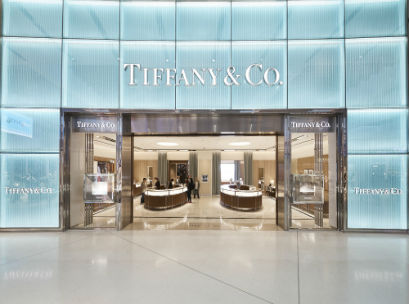 Luxury jewellery retailer, Tiffany & Co., has posted an increase in profit for its third period compared to the same period last year reflecting sales growth in most regions, as well as increased sales in the fashion jewellery and the high, fine and solitaire jewellery categories.
Luxury jewellery retailer, Tiffany & Co., has posted an increase in profit for its third period compared to the same period last year reflecting sales growth in most regions, as well as increased sales in the fashion jewellery and the high, fine and solitaire jewellery categories.
Revenue for the quarter rose 2.8 per cent to $976.2 million, up from $949.3 million last year. Comparable store sales declined one per cent.
Net earnings increased five per cent to $100 million, or $0.80 per diluted share, from $95 million, or $0.76 per diluted share, in the prior year.
Worldwide net sales of $2.8 billion were two per cent above the prior year, and comparable store sales declined two per cent. On a constant-exchange-rate basis, worldwide net sales increased three per cent while comparable store sales declined one per cent.
Net earnings increased seven per cent to $308 million, or $2.46 per diluted share, compared with $288 million, or $2.29 per diluted share, last year.
Alessandro Bogliolo, company CEO who joined Tiffany in October, said the latest financial results marginally exceeded their expectations, adding that he believes Tiffany has the medium to long-term potential to achieve meaningful comparable store sales growth and drive higher operating margins and earnings growth.
“A year or so ago, the whole organisation appeared to be struggling to keep up, but a raft of initiatives have since helped to pull elements of the proposition into the twenty-first century,” said Neil Saunders, managing director of GlobalData Retail.
Saunders said this work shows up in the numbers which continue along an improved trajectory.
“What has Tiffany done to engineer this improvement? The product has to be the starting point, with the greater emphasis on fashion and designer collections generating interest among younger consumer segments,” Saunders said. “The urban Tiffany hardwear range has performed particularly well, while Elsa Peretti’s assortment of pieces has added a gentler contemporary edge to the offer.”
According to Saunders, Tiffany has recently followed up this success with the whimsical Everyday Objects collection of decorative accents. “It is unlikely that the $9,000 sterling silver ball of yarn nor the $1,000 silver tin can will be to everyone’s taste or budget, although they generated some favorable publicity for the brand.”
Behind these headline items, more accessible pieces like the bone china ‘paper’ cups at $95 are likely to attract more interest. The point is that Tiffany is trying something new and is grabbing the attention of shoppers, Saunders added.
As well as using its products to showcase the brand, Tiffany has also upped its game in general marketing and advertising. These have been more in vogue than past campaigns, and the use of celebrities like Janelle Monáe, Zoë Kravitz, & St. Vincent (Annie Clarke) is helping consumers to see the brand in a new, more modern light.
“One interesting consequence of this gentle repositioning is that many of the younger shoppers Tiffany is starting to attract are going online rather than into stores,” Saunders said. “This has resulted in some robust e-commerce numbers. It is to Tiffany’s credit that it has responded by improving the website experience and by increasing the amount of content across its platforms.”
Saunders said this outperformance of online is likely to continue, which presents a dilemma to Tiffany. “Many of its stores are in desperate need of refurbishment and ideally, need to be brought up to the same standard as the new Union Square shop in San Francisco. This is an expensive undertaking and one that the group may struggle to justify if more sales are migrating online.”
Saunders added the new Blue Box Cafe in the New York flagship is a smart way of pulling people into the store, but this initiative can’t be easily replicated across the estate. Moreover, it is a shame to draw people into a shop that still feels dated and fusty.
“Despite all the progress, further change, especially in stores, is essential,” he said. “For as much as Tiffany has made strides, it has not yet regained that full youthful vigor that so many of its peers exhibit. The gaudy, old-fashioned lights on its New York store underscore that there is much more thinking, and much more work, to do in the reinvention of this heritage brand.”
Access exclusive analysis, locked news and reports with Inside Retail Weekly. Subscribe today and get our premium print publication delivered to your door every week.





